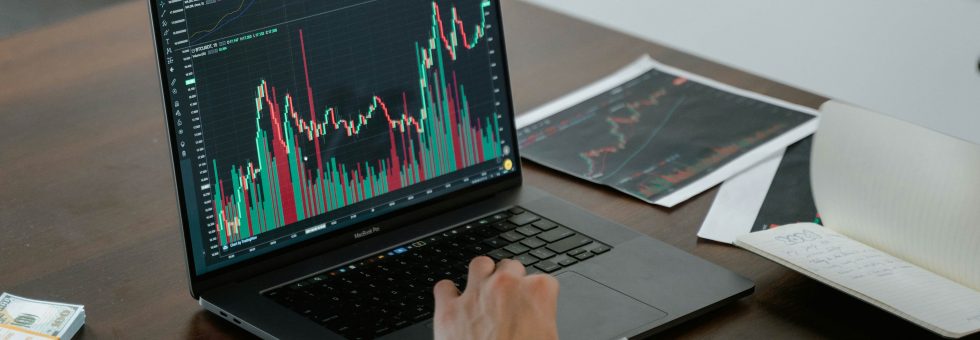The foreign exchange (FX) market is one of the most volatile and dynamic financial markets. With currency values constantly fluctuating, businesses and traders must navigate significant risks and opportunities. In recent years, machine learning has gained traction as a powerful tool in FX trading, revolutionising how predictive models and algorithmic trading are applied to cross-border transactions.
This blog explores how machine learning is transforming FX trading, the role of predictive models, and the advantages of algorithmic trading. Additionally, it examines risk management strategies, challenges, and future trends in this evolving field.
What is Machine Learning in FX Trading?
Machine learning, a subset of artificial intelligence (AI), enables systems to improve performance without explicit programming. In FX trading, machine learning analyses historical prices, trading volumes, economic reports, and other data sources to identify patterns beyond human capability.
The strength of machine learning lies in its adaptability. As new data becomes available, models adjust their predictions, improving their ability to forecast currency movements and manage international payment risks.
Predictive Models: The Brain of Machine Learning in FX
How Predictive Models Work
Predictive models in FX trading use mathematical techniques such as regression analysis, neural networks, and support vector machines. These models analyse historical volatility, price trends, trading volumes, and macroeconomic factors to forecast market movements.
For example, if an economic report signals potential currency depreciation, predictive models can detect similar patterns and provide actionable insights for traders managing FX payments.
The Role of Big Data
Machine learning algorithms excel at filtering market noise to identify meaningful patterns. By processing vast amounts of data, they enhance the predictive accuracy of exchange rate movements, allowing traders to anticipate changes before they occur.
Real-Time Adaptability
One of the key benefits of machine learning in FX trading is its ability to update in real time. As new data enters the market, predictive models refine their outputs, ensuring traders remain adaptive to market fluctuations.
Algorithmic Trading: Automating FX Strategies

Algorithmic trading automates FX transactions using predefined rules and strategies. These computer-driven systems execute trades with precision and speed, minimising human error and emotional bias.
Key Benefits of Algorithmic Trading
- Speed: Orders are executed in milliseconds, allowing traders to capitalise on market opportunities instantly.
- Accuracy: Data-driven decisions eliminate emotional influences, ensuring consistency in trading strategies.
- Scalability: Algorithms can handle large trade volumes efficiently, making them ideal for businesses managing frequent transactions.
- Real-Time Adjustments: Adaptive algorithms modify strategies based on evolving market conditions, mitigating risks during periods of high volatility.
How Algorithms Manage Currency Risk
Machine learning algorithms assist in hedging against adverse market movements. For instance, if an algorithm detects a potential currency depreciation, it can initiate protective trades to safeguard against losses.
How Machine Learning is Changing FX Risk Management
Enhanced Forecasting and Decision-Making
By improving the accuracy and timeliness of currency forecasts, machine learning enables businesses to plan their operations more effectively. Companies can optimise forward contracts and pricing strategies based on expected exchange rate fluctuations.
Automation and Efficiency
Traditional risk management methods are time-consuming and prone to human error. Machine learning automates complex risk mitigation strategies, ensuring businesses can respond swiftly to market changes.
Customised Trading Strategies
Every business has unique risk tolerance levels. Machine learning allows firms to tailor trading strategies to align with their financial goals, whether they prioritise risk aversion or profit maximisation.
Real-World Applications
A multinational company dealing with frequent currency conversions can leverage machine learning to detect volatility patterns and adjust its trading approach accordingly. By integrating predictive analytics, businesses can improve performance while minimising currency fluctuation risks.
Challenges and Considerations
Data Quality and Volume
The accuracy of machine learning models depends on the quality of data. Poor data sources can lead to unreliable predictions, emphasising the need for robust data pipelines.
Model Complexity and Maintenance
Developing and maintaining machine learning models requires expertise in AI and financial markets. Companies must invest in skilled personnel or collaborate with technology providers to ensure model effectiveness.
Regulatory and Ethical Considerations
As machine learning adoption grows in FX trading, regulatory bodies are implementing guidelines to ensure transparency and compliance. Businesses must ensure that their trading algorithms adhere to market regulations and ethical standards.
The Future of Machine Learning in FX Trading

Emerging Trends
- Integration of Alternative Data Sources: Future models may incorporate social media trends and real-time economic indicators for enhanced predictions.
- Enhanced Collaboration: More shared platforms may emerge, allowing market participants to exchange insights and improve efficiency.
- Increased Accessibility for SMEs: While large financial institutions currently dominate machine learning applications, evolving tools will enable small businesses to leverage these technologies.
- Continual Evolution of Algorithms: Advances in AI will lead to more sophisticated trading models capable of real-time decision-making and adaptive strategies.
Conclusion
Machine learning is revolutionising FX trading by improving forecasting accuracy, automating trading strategies, and enhancing risk management. As technology evolves, businesses that embrace machine learning will gain a competitive edge in navigating currency market volatility.
For companies engaged in international trade, machine learning is no longer an optional tool—it is a necessity. By adopting advanced forecasting techniques and algorithmic trading, firms can better manage foreign exchange risks and capitalise on emerging opportunities in the global financial landscape.
To explore cutting-edge FX solutions powered by machine learning, visit keyfx.co.uk.
